Sculpting A Brontosaurus For Art Class
Zeus the Brontosaurus at my office, in all his modelled grace.
As a skilled illustrator and enthusiast of the world of animals since childhood, I’ve always found art a great way to not only depict its beautiful creatures, but also have fun educating other people about them. Even in a time when I’m still trying to recover from my "mental extinction," I have created one of my most impressive cases for this aim yet - a lifelike, forty-centimetre-long, foam clay model of a Brontosaurus I nicknamed "Zeus", complete with a diorama of his environment. It was created at school for my art GCSE, and I even toured it across classes as an educational art exhibition for both children and adults. This scaled-down dinosaur took two weeks of production, and it ended up a success as anticipated, one I’m very happy with.



It all began on the 4th of February, only because after opting out from another daily screening of BBC NewsRound (which I never liked very much for the same reasons behind the "mental extinction") at the classroom, the art GCSE assistant invited me into the art room to try out some creativity. Having known my passion for palaeontology for a while then, she suggested if I could sculpt a dinosaur model, and she handed me a bucket of foam clay. I was already one who’d recently sometimes think about adapting his life restorations of long dead animals into Ray Harryhausen/Arthur Hayward-style stop-motion puppets, and being reminded of this I even shown her an old video of how they were made, but that was something I preferred doing in better dedication at home, plus I had little knowledge or resources on how to make complex models like those. Without the internet, the best reference I could use was the Encyclopedia of Sauropods by Ruben Molina Perez and Asier Larramendi (which I had donated to school two years ago, already having a copy but mistakenly receiving another on Christmas instead of the Encyclopedia of Theropods, which was virtually out of stock), and I settled on sculpting Brontosaurus, the "poster child" of the enormous sauropod dinosaurs (though I’ve always seen Diplodocus, Apatosaurus and Brachiosaurus as popular representatives as well, probably because of its former infamous invalidity as a genus) and one I’ve been wanting to reconstruct for a while then. I first modelled with the beady foam clay as a test to see how good it would be for a dinosaur, but it ended up working so unexpectedly well that I kept to it. I first modelled the trunk of the body, then the neck, tail, and legs. Throughout the day, I would continue to improve on the model by fattening it up by lining down layers of foam clay like modrock. I would also use this technique to give this huge dinosaur a leathery, elephantine feel to its hide, especially with the flanky webbing of skin from the legs. Impressively, the characteristic, whip-like end of the brontosaur’s tail, as modelled, tapered to such a light point that it even bowed to a downward curve, which really brought the sauropod to life. I was already amazed and excited with the model and even had different plans for it. We put the model by the windowsill to let it dry for a week.
It was not until then that we touched the sculpture again. I was expecting it to feel like a typical heavy, hard clay model, but it turned out quite smooth, squishy and bendy, like some of those cheap old dinosaur toys, which felt satisfying, especially at the flailing tail-end, which just made it feel even more flailing. It was almost as if I had accidentally made my first toy. Before we would paint the Brontosaurus of its skin colour, we first spread a white acrylic undercoat over the course of a few days, first the top side, then the bottom. After this undercoat had dried, it was time for painting. There unfortunately weren’t much colours of acrylic paint to straight away choose, but at least I could successfully create them by mixing the colours, and out of those colours themselves, a beautiful array of natural shades. Though I was speculatively the complete opposite until a couple of months ago (thanks All Yesterdays), I now personally imagine that Brontosaurus, being a gigantic animal, would’ve been rather dull and earthy in colour, though being a reptile, it may still have had some accents of vibrance unlike many mammals, basically a cross between an elephant and a large lizard. This goes the same for how I imagine other large dinosaurs (like Tyrannosaurus and Triceratops) would’ve looked like when alive, I just think it makes a lot of sense for such animals, and for them it would likely have been favoured by natural selection. Additionally, several well-preserved dinosaurs of this size are already known to have been this dull thanks to the recent, revolutionary examination of melanosomes under the microscope, with the nodosaur Borealopelta discovered to have been an ochre red (as well as being countershaded for camouflage within its forest habitat), and one flank of a hadrosaur found to contain eumelanin from a study in 2020. The result as streaked and dappled onto the model is a beautifully natural palette that fits really well on a scaled-down replica of a 17-tonne colossus of a reptile. I also always wanted to add iguana-like spines across the brontosaur, similar to what is known from its relative Diplodocus, though no concrete evidence for this on apatosaurines has emerged yet, but never say never with phylogenetic bracketing. At first I didn’t know how could this be done, and I was testing with different mediums by dappling them on the modelling board to no avail, but luckily the art assistant suggested the viscous undercoat would do, and it worked amazingly.
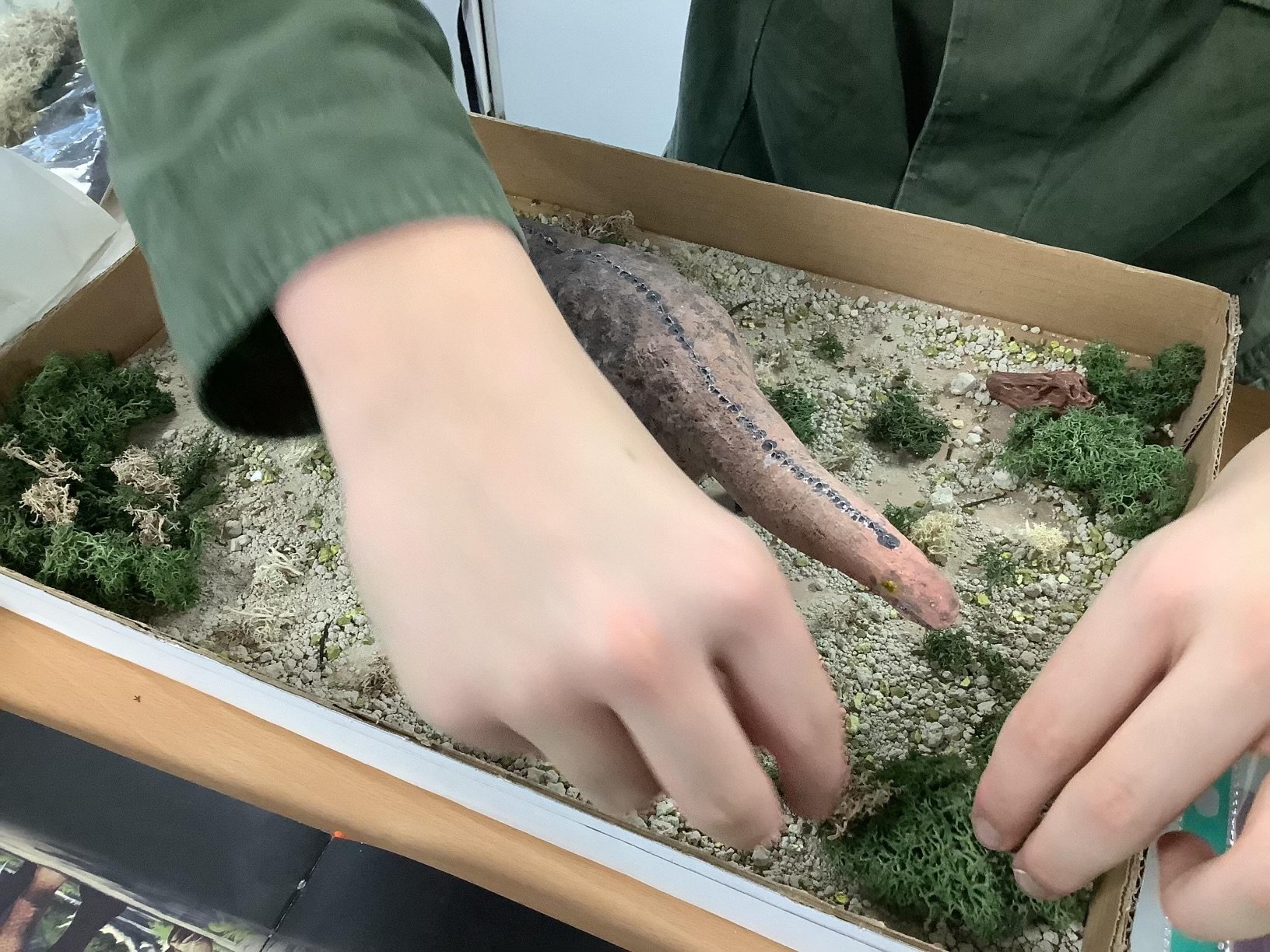
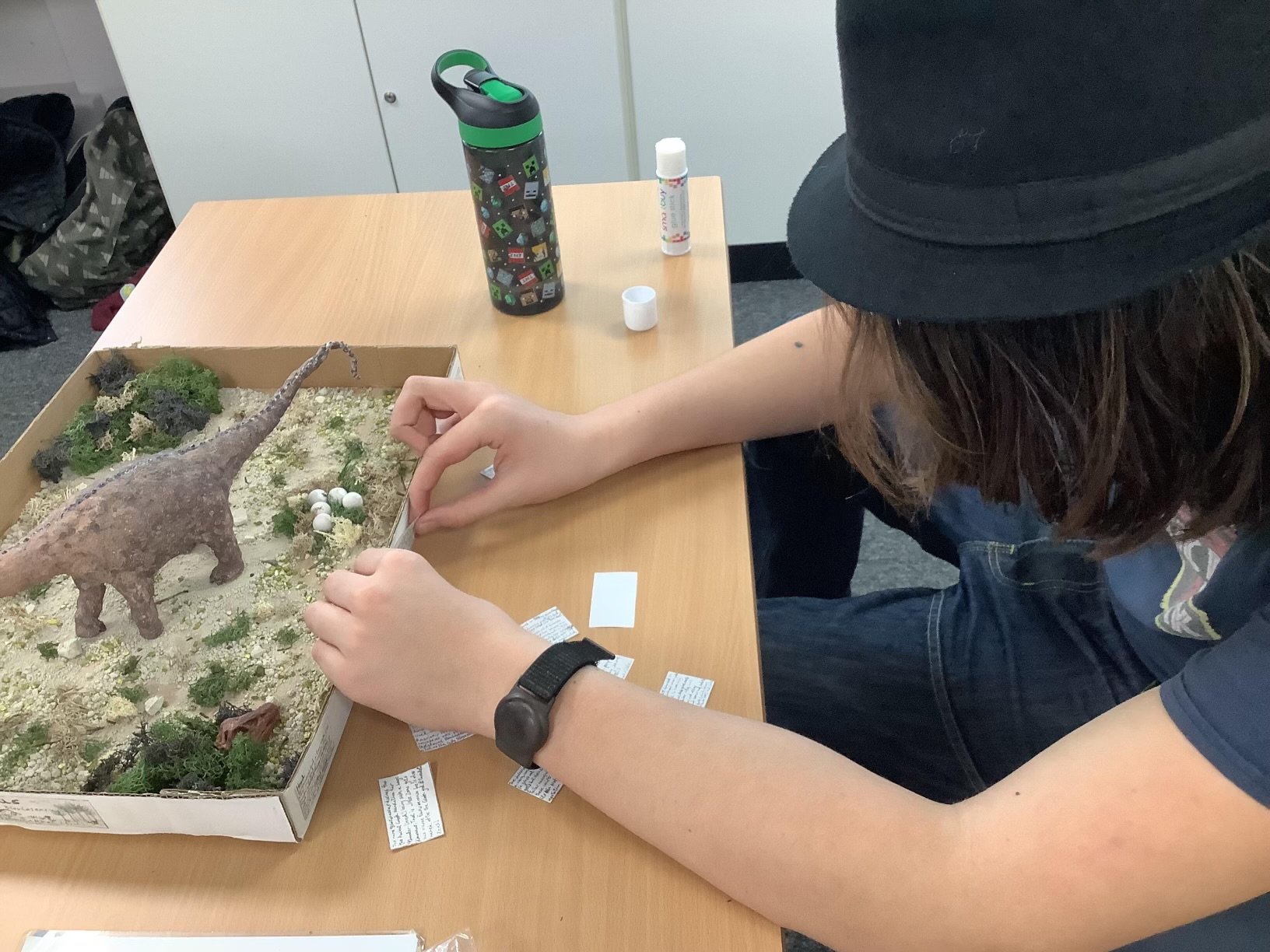
From the past week onward was brainstorm on what to name the brontosaur, the theme being to fit a scaled-down version of the huge dinosaur. I proposed different names, such as "Bron-bon" (a pun on "bon bon" for the small size, but that is only French for "good good," and the name itself is a bit weird since it still isn’t a baby), but I would end up naming him "Zeus," after the Ancient Greek god of thunder, since the name of Brontosaurus itself is an Ancient Greek translation for "thunder lizard," in awe of its sheer size.
Since the successful beginnings of this model, I had always planned to take Zeus on tour throughout the school once he was complete for all to admire, carried by a sturdy diorama of its reconstructed habitat, lined with facts about the dinosaur on its sides, though I sometimes thought that would be quite unlikely to complete with the obscurity of props in the school. I first planned the diorama to be a typical school tray, but an assistant in the class suggested a cardboard box, and I straight away agreed that it would be much clearer. The box was cut to a height of five centimetres, at least as far as I remember, to show Zeus in his glory while still bearing room for the readable fact sheets. Even with my predictions of the props, we found a good amount of them. At the art directory just next door, we found different soils and pebbles that I could use for the arid terrain, and there were also spheres of polystyrene I had the bright idea of using as eggs (Zeus didn’t lay them, he’s a male, and they’re only for demonstration). We had the teacher post an email for model moss and trees, and one teacher luckily had the answer, although he had no trees but I didn’t mind that. He even had something I never thought of using in the diorama before, a Safari Limited tub of model dinosaur skulls, one of which was of a diplodocid that I’d end up using for representation of the brontosaur’s head, and also for the detail. After this, I would write down the fact boxes, usually 5x3 centimetres to fit on the cardboard walls. On Zeus’s left the facts were individually about the parts of his body, from his long neck to his gigantic size and his whip-like tail, while on his right were general facts about his species, such as his time, place, diet and discovery, plus the time it was once thought to have been a misidentified genus for over a hundred years. The diorama was easier of a success than I ever thought, and on the afternoon of the 14th of February, the last Friday before the half-term, it was ready to tour across the school, visiting a lot classes and headteachers, and it gained a lot of exciting reception which I’m very proud and happy of.
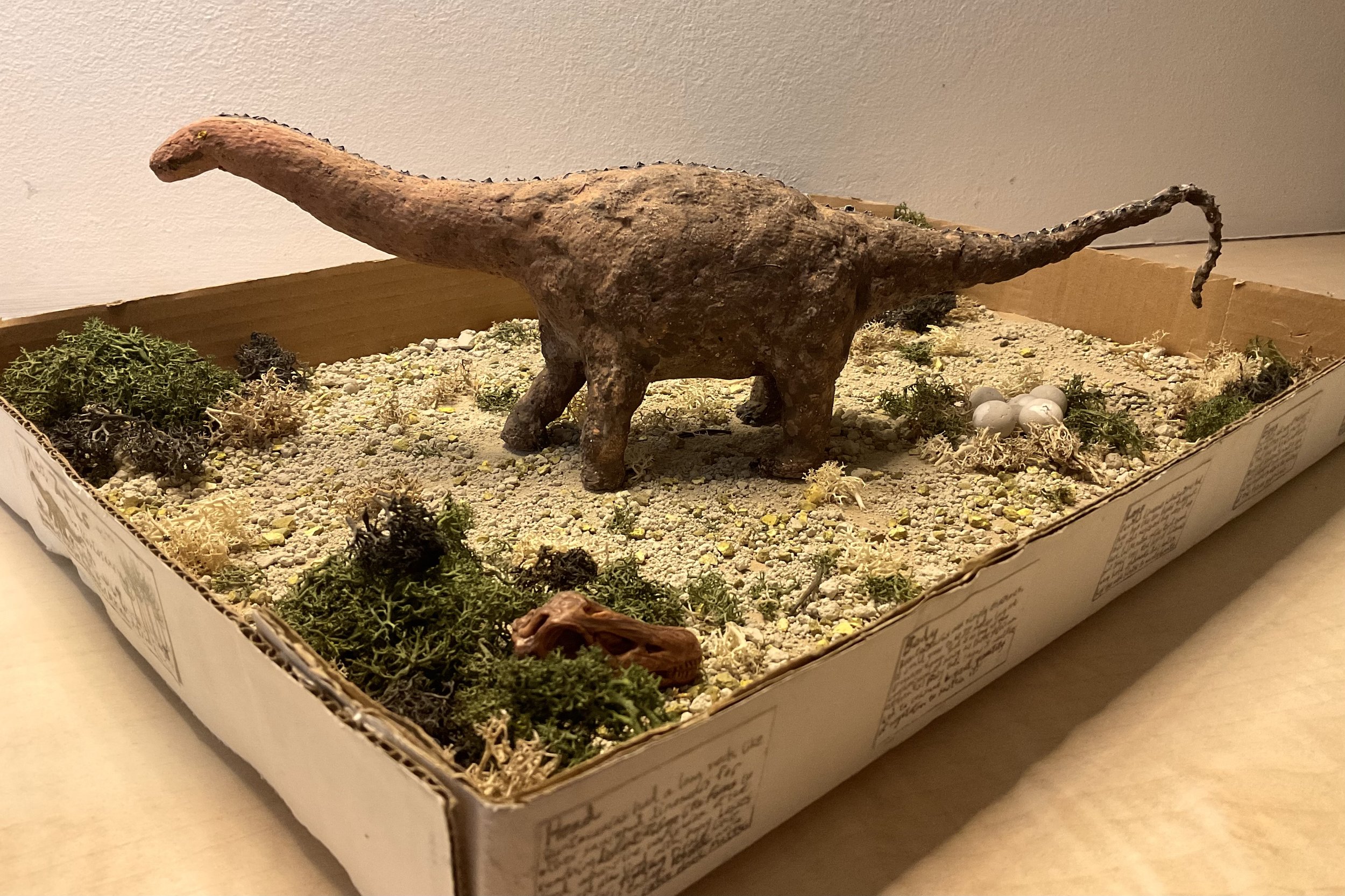
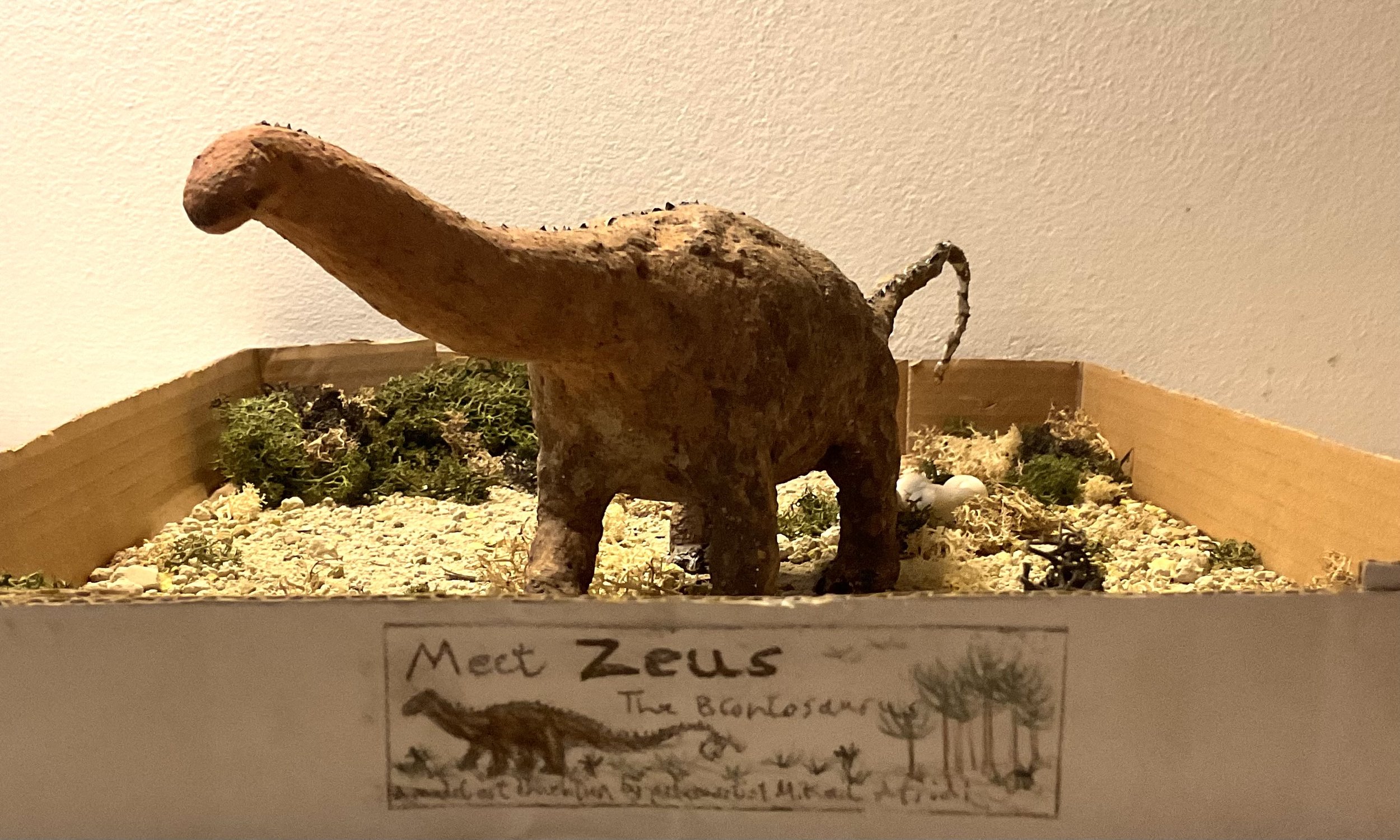
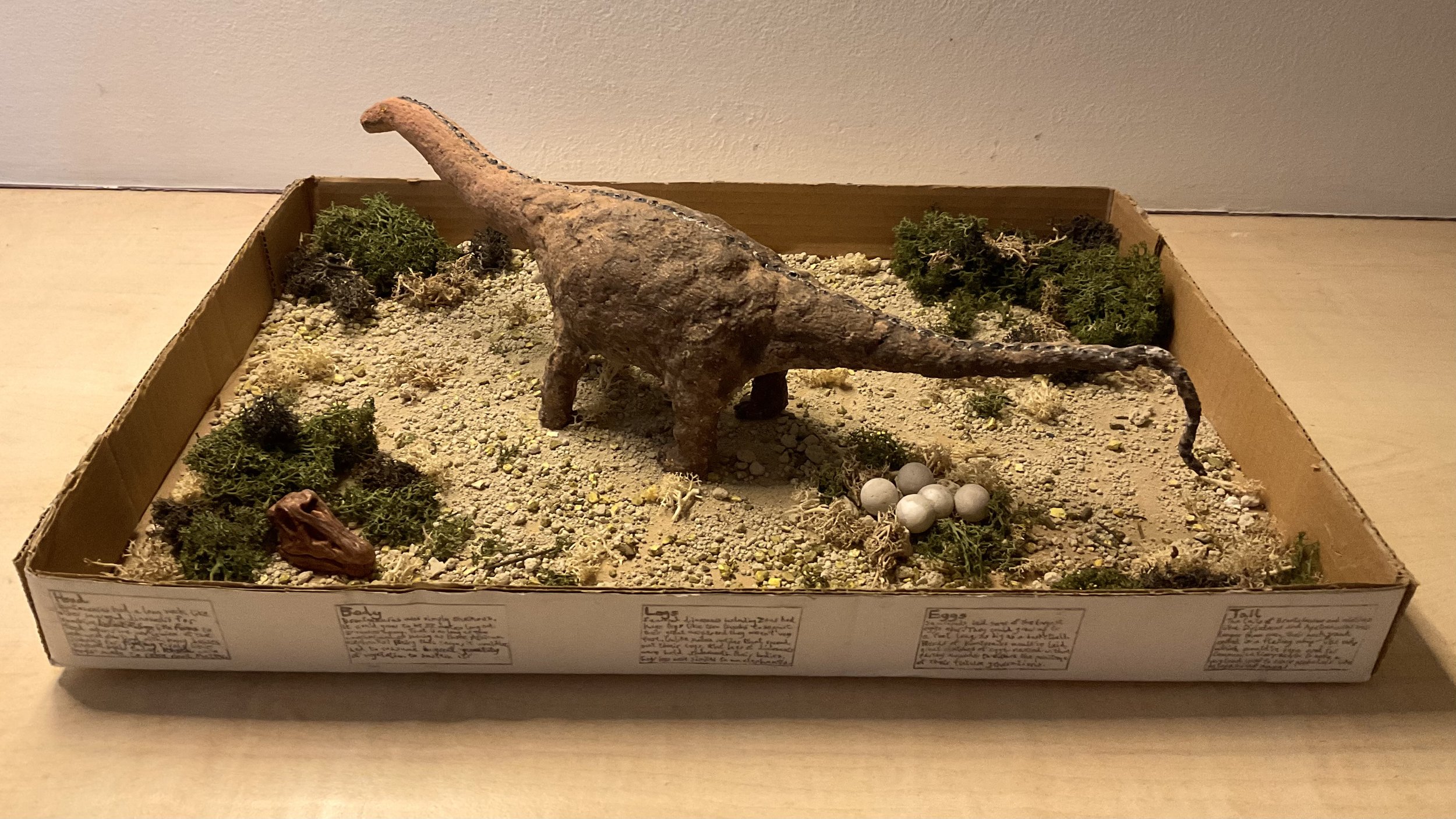
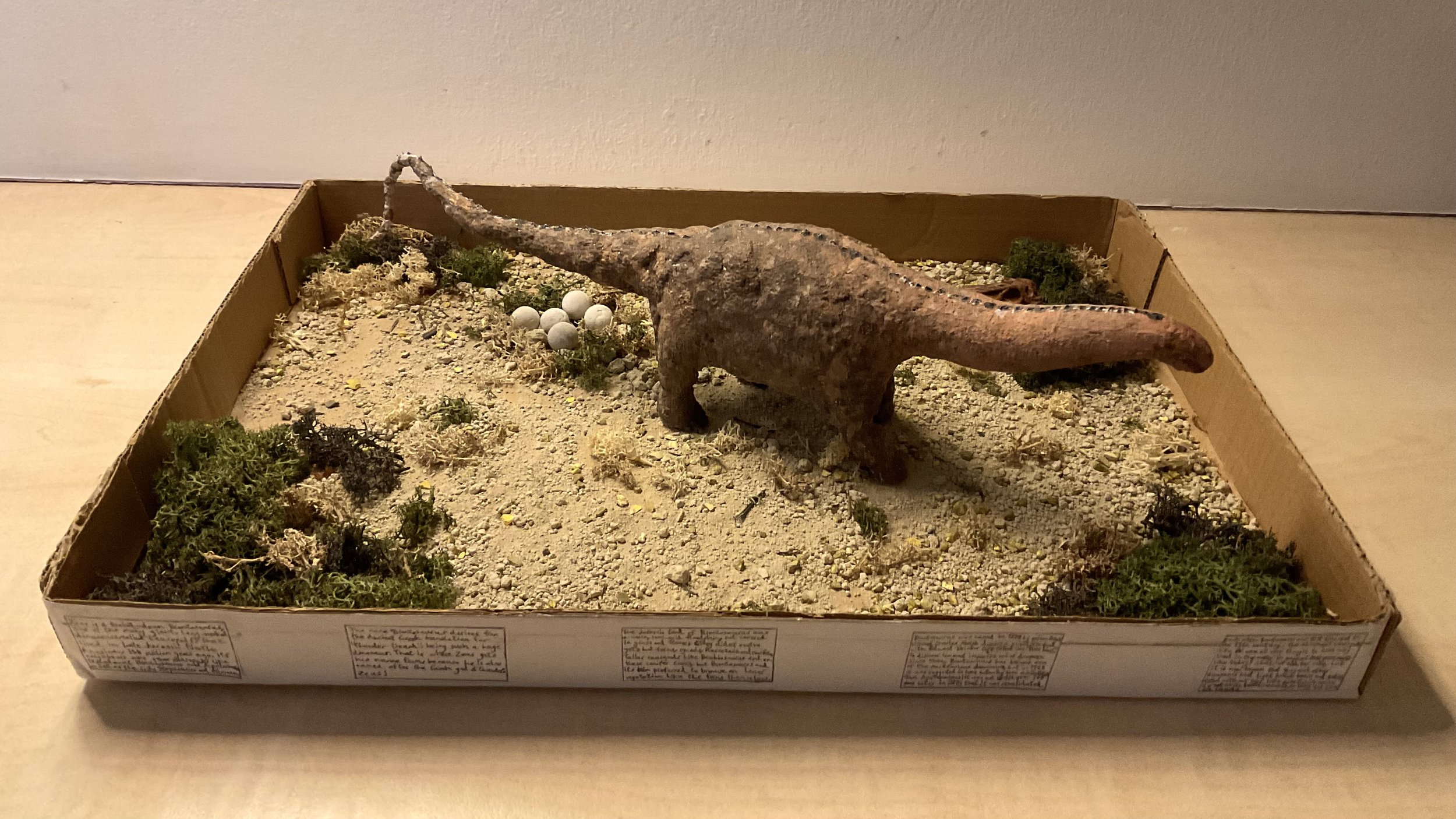
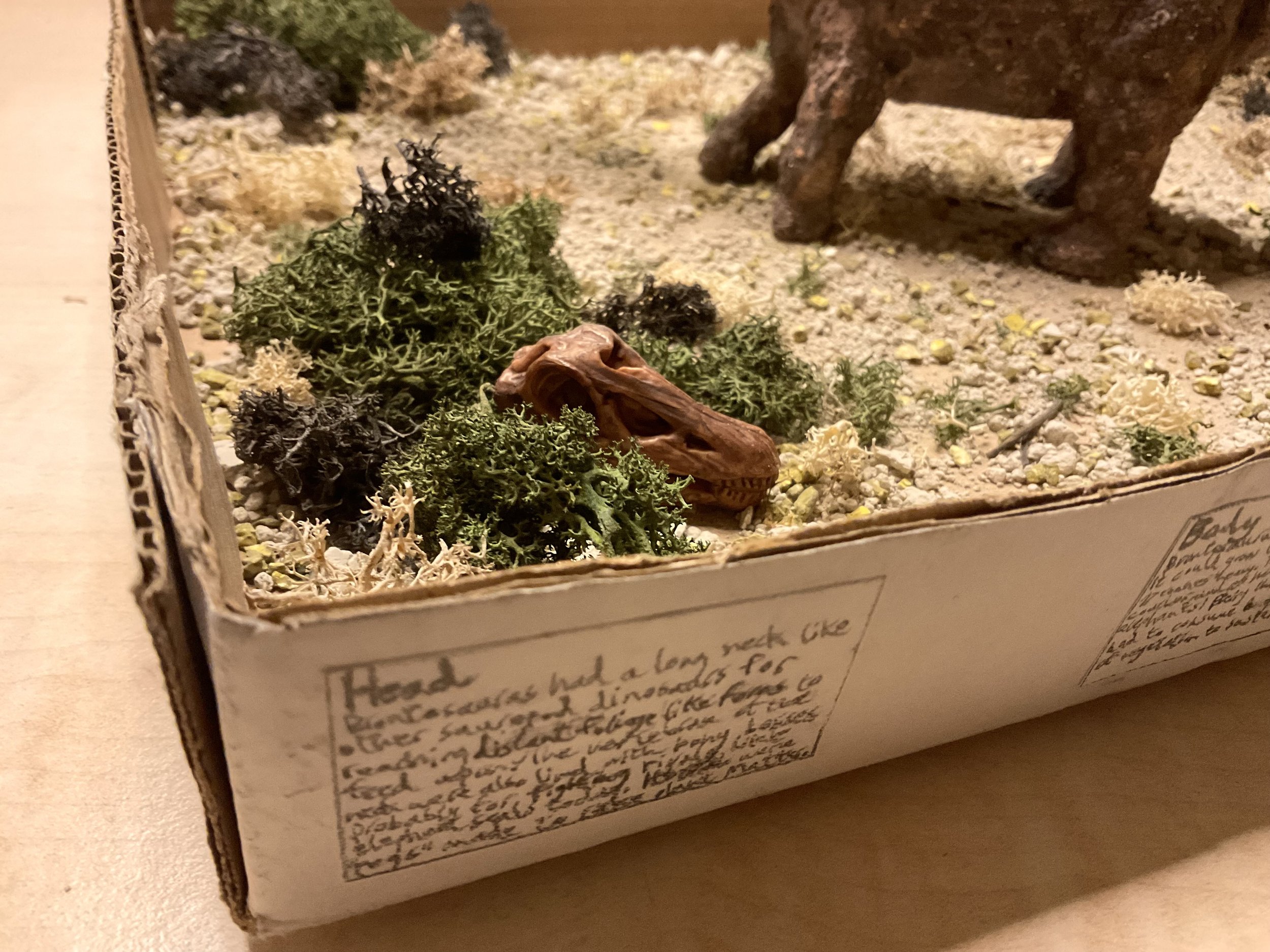
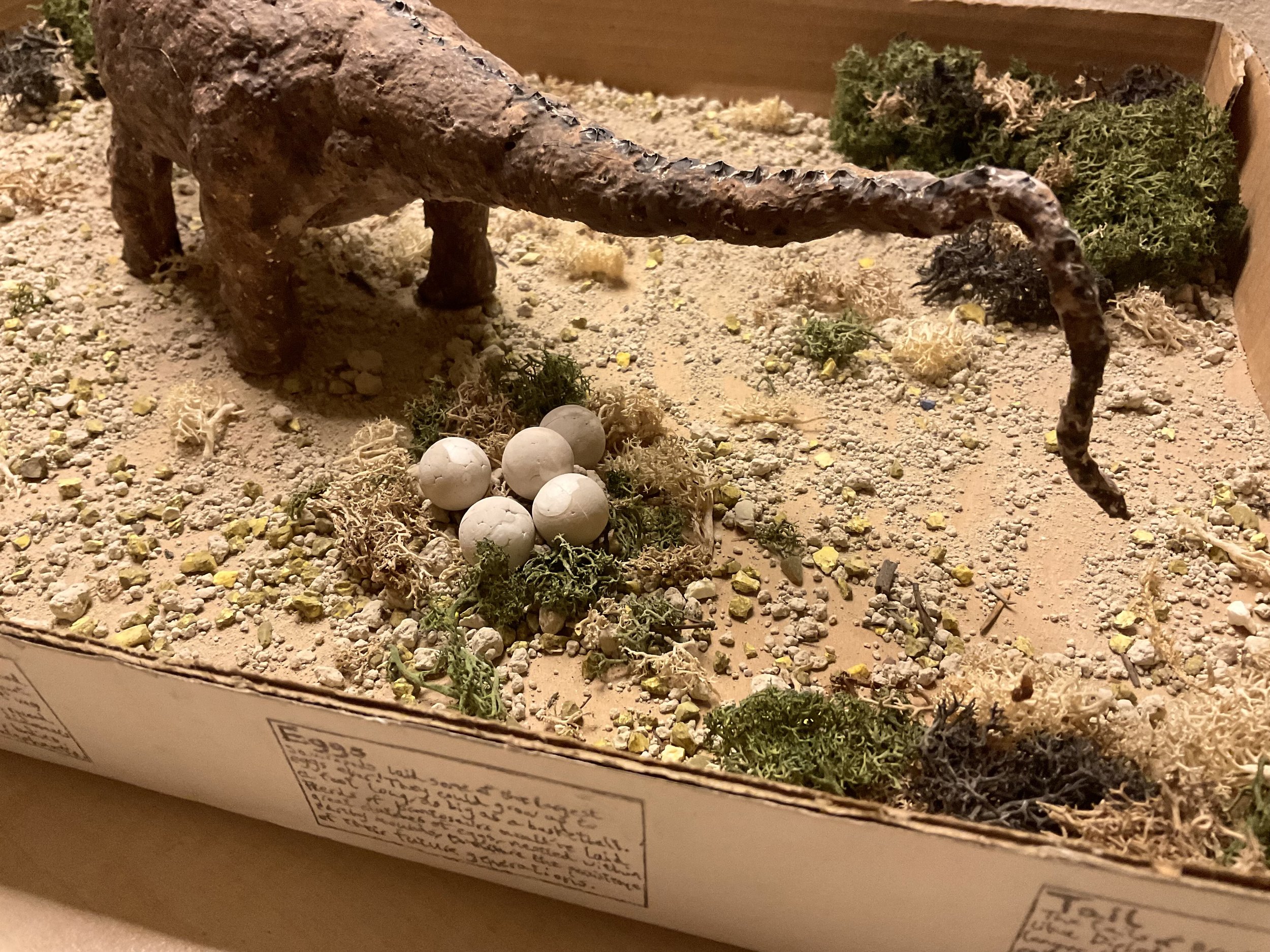


At the end of the day there was a bit of a light argument about taking Zeus home, but it was agreed that I would let the driver of my minibus put it and the diorama under the seat beside him, and it now sits safely at my bedroom office, where my family can view it, though it might come back to school at times for assessment in my art GCSEs. I would use other great references if I weren’t taking a break from the internet, but it is at least virtually accurate to what we know of the animal, and I can confidently say it’s one of my best pieces of art ever, almost perfect in fact, and I’d love to thank everyone at school who helped me with its creation and enjoyed its execution.
With my break from the internet, my perception has been somewhat changing, and I would like to announce that I may yet again rebrand by at least a bit. I’m thinking of reorganising this website, maybe reworking the categories and decluttering them of status posts, although I’m light on social media now and I might be a bit shy coming back to it, especially my abandoned Discord server. Once I lose the reasons for my break, I might re-adapt, but I would almost certainly not come back to Discord as even the second time in a year that flopped my mental health. I might still be called Mikailodon as a nickname, but it’s not like I necessarily need the chimeric mascot for that anymore, as I just want to focus on being a general palaeontology educator and illustrator. As a replacement for the Palaeodigon and in turn The Bestiary, I’m thinking of a yet even simpler art series of individual prehistoric animals, not only that, but it will also be an official reconstructive project with an aim to restore, educate and celebrate the tapestry of life on Earth as it had evolved for millions of years, and it would be great to work with scientific institutions. The Eon Project" would be a great name for it. I will have to wait for the regaining of my confidence on the internet though for reference, and maybe college too for a more academic, public approach. Anyways, thank you all for enjoying this model and its story.
